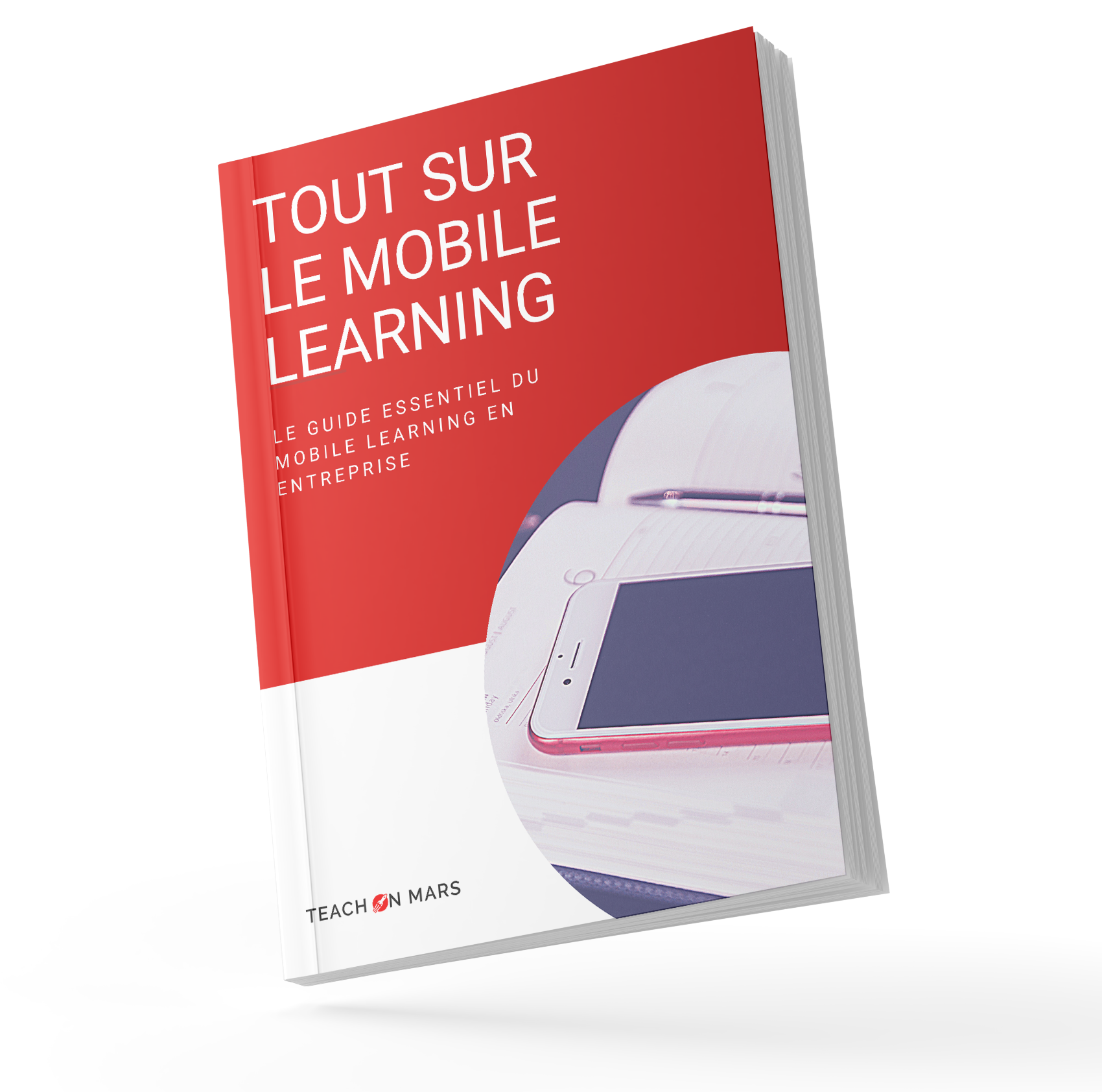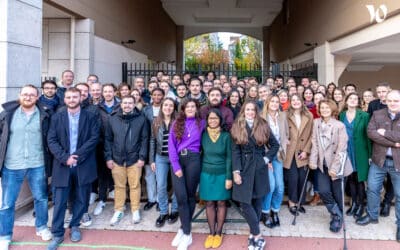For the second consecutive year, the second edition of the Mobile Learning Summer University took place on July 4th and 5th in Sophia Antipolis. On this occasion, Tony Small, Managing Director at Inova stepped in to host the “The View From Across The Channel: The UK’s Hottest L&D Trends” keynote.
Curiosity and Performance
There are two key themes and challenges underpinning all the fundamental recent trends and hot topics in organisational learning in the UK. The first of those is curiosity, or more precisely, how can we as L&D professionals encourage our learners to best leverage that most human of traits, their natural curiosity. The second is the question of improvement of operational performance in organisations.
Curiosity is a broad theme to say the least, and there are a number of sub-texts running behind it. Albert Einstein was convinced of the vital importance of human curiosity. “The most important thing,” he is reputed to have said “is to never stop asking questions. Curiosity is its own reason.” As an L&D profession, we need to recognise that curiosity is vital not only to the continuing evolution of our species, but to the spread of ideas and the development of knowledge and skills. So we need to nurture curiosity and harness its power, but without ever suffocating it. Because too much structure, too many constraints, too restrictive a learning environment will slow and even crush curiosity. “It is a miracle that curiosity survives formal education,” as another famous quotation goes. So a clear trend in organisational learning in the UK right now is a quest for ways to encourage learners to use their curiosity and draw momentum from their natural desire to learn and improve their knowledge and skill-sets.
Microlearning: myth or reality?
The growing importance of the notion of learner curiosity has given rise to the phenomenon of the “pull” learning culture, where learners – rather than the learning or development organisation – are the driving force behind the creation of learning opportunities. Microlearning has been identified as a critical enabler in this sense, obliging instructional designers to conceive learning resources in easily accessible, easily digestible units. “Snackability” has become a critical learning design criterion, in the hope that learners will be enticed into choosing quick, convenient and satisfying learning activities at times that suit them, exploring development opportunities they select themselves in response to opportunities arising in the course of their professional or private lives.
Microlearning is also becoming a major factor in a ground-up rethink of instructional design practices. The accent is now more and more on quality rather than quantity. Where content authors have often been guilty in the past of padding out learning resources with unnecessary volume – particularly in some forms of digital learning – they are now being asked to pare down what they create to a chiselled, precise and impactful learning item capable of standing alone and delivering learning value or performance support efficiently. And before the budget people start to get too carried away, we should make it clear straight away that producing shorter and more concise learning resources does not mean cheaper learning resources. Often quite the contrary. As Winston Churchill said: “If you want me to speak for two minutes, I’ll need three weeks to prepare. If you want me to speak for thirty minutes, then I can be ready in a week. But if you want me to speak for an hour, I can speak right now.” Microlearning will not enable organisations to cut their L&D budget, but it may enable them to invest more efficiently in impactful, relevant content that does not dilute the message with excessive volume.
The power of the instructional design principles and format of microlearning is being amplified by rapid advances in the fields of data analysis and machine learning. This is adding a new dimension to the notion of personalised learning, with systems now able to direct learners towards content that they would not otherwise have known how to access and which can help them build the skills or access the knowledge they need to do their jobs better. At the same time, any resources that are not directly relevant to them can be stripped out of their personal learning environment or experience. A great practical example of this in use is the IBM artificial intelligence program Watson, which is now being used as the backbone for an online, interactive learning platform. Learners can ask Watson questions related to their learning needs through a natural language interface and the software will use its stored metadata to draw up a specific selection of resources and content to meet their requirments.
The emergence of next-generation learning ecosystems
The vision of Teach on Mars, which is to make every moment a potential learning moment is directly aligned with this thinking on the future of learning. With learners having less and less time in their professional environment to take part in traditional organisational learning, they are demanding that any training opportunities offered to them follow the “J3 Model” – Just In Time, Just Enough and Just For Me. This means building in different types of learning content, integrating opportunities for social and collaborative learning and embracing features that modern learners expect such as gamification and sharing/friendly competition across learner communities.
Next-generation learning ecosystems, offering a more varied, fluid and agile development experience than a traditional LMS-based approach, are at the forefront of this evolution. Upstream technological standards are evolving too, with SCORM – a non-negotiable instructional design staple for the last two decades – now gradually conceding territory to new standards such as xAPI (eXperience API) or TinCan. These enable a far broader range of activities which historically have been outside the scope of “pure digital learning” to be integrated, recorded and tracked as learning opportunities.
Moreover, many feel this sea-change in the marketplace is just the start. With the development of the Internet Of Things, every interaction with a connected object potentially becomes a fully integrated step in a learning pathway that the learner co-designs and co-builds in partnership with his employer or organisation. Meanwhile, on the client side, recent feeling in the UK is that next-generation learning ecosystems have now become a fully paid-up legitimate alternative to the traditional LMS option. Whereas until recently corporate clients believed that deploying a next-generation approach solution would require additional investment in their incumbent LMS, they are now coming to realise that the two can happily cohabit without increased complexity or cost. Some are even arriving at the conclusion that a next-generation learning ecosystem can possibly replace their traditional LMS, which we are beginning to see starting to happen in some places.
The move towards Performance Enablement
At the same time, the L&D profession is being encouraged to reconsider and redesign the role it plays and the value it creates in the organisation. More and more, performance enablement, which has long been central to sales and business development management, is becoming a key objective of learning objectives across the whole organisation. Simply put, this entails involving learners directly in their own development and analysing pragmatically with them the skills, knowledge, information or support they need to do their jobs better and obtain improved operational results. In parallel, measures are put in place to improve managerial behaviour and efficiency, to right-size resources placed at employees’ disposal and monitor the proper alignment and tracking of performance goals across all hierarchical levels. Organisational learning becomes one tool in the suite of tools that senior management have at their disposal to optimise results and make a different to the bottom line.
What we are observing in the UK right now is that in organisations where this new approach is gaining momentum, the skill-set of L&D professionals is evolving. New roles like that of the performance analyst – working closely with management and operational teams alike to identify key zones of underperformance and then work on the ground to deploy practical solutions at the point of need – are in the view of many becoming just as important as that of the “traditional” programme manager or instructional designer.
Encourage learners to build their own playlists
The renowned US organisational learning and EdTech expert Elliott Masie argues that the modern learner has outgrown the tried and tested « training formulas » that many learning initiatives are built on. My understanding is that by this he is referring to the approach based on definition of learning objectives and deployment of a catalogue and course solution that has been the mainstay of instructional design theory for as long as anyone can really remember. A powerful analogy Elliott uses is that of the way modern listeners consume music. In the past, music fans have had no choice but to purchase whole albums and listen to songs in the order defined on those albums by the artist and the producer. “But nowadays,” asks Elliott, “who buys albums anymore?” The modern music industry has evolved to let music fans download cherry-picked songs across genres and artists and then build playlists that are specifically tailored to their various listening environments. The traditional LMS-based organisational learning industry, on the other hand, is still forcing learners to consume “albums” of learning, instead of enabling them to build their own “learning playlists”.
In other words, the sooner we understand that it is time to break with the traditional scholastic language and paradigms, the better. Modern organisational learning is a dynamic and interactive process requiring us to rewire our mindsets, our communication habits and our learning culture. For example, “what do we actually need to teach our learners?” asks Elliott Maisie. Modern technology and the memorisation power it puts in all our hands means that there are vast corpora of information that we no longer need to acquire as knowledge in the traditional sense. Powerful tools such as the modern smartphone, for example, mean that we no longer need to memorise telephone numbers, addresses, our diary engagements or our PIN codes. And that’s just scratching the surface. Elliott Masie contends that L&D professionals need to start thinking about how to teach learners the navigational skills that will enable them going forward to find the best place for the right answer, whatever their requirement.
Now you may be wondering whether all this pragmatic focus on performance enablement is not going to stifle and frustrate the natural human curiosity that I identified as so critical earlier. Curiosity, after all, is a deeply human, personal and subjective trait, while operational performance is by definition an objective organisational notion depending heavily on measurable concrete data. So are the two mutually contradictory? Well, no. In fact, they are complementary – but the L&D profession has a key role to play in ensuring they cohabit harmoniously, encouraging learners to nurture and satisfy their curiosity while helping them keep a critical eye on their results and performance.
Re-engineer your own learning lifestyle
One thing we must all keep in mind in these exciting but challenging times of change is that as L&D professionals we all have a duty to examine, analyse and even challenge the way we ourselves learn. What are our everyday learning habits? How do we pick up the little stuff we need to operate better on a daily basis? And how do we build the life-changing new skills that develop us as a person? This is something I’ve been trying to discipline myself to do more and more over the last year or so, and I’ve come to three early conclusions that I’d like to leave you with as I wind up my thoughts here today:
- There is no direct correlation between the length or complexity of a learning activity and the value it delivers. The quality of the overall learning experience and the learner’s mindset are far more important determining factors.
- Explore every avenue in your personal learning and development mix. Don’t just stick to the tried and tested formulas – be adventurous and look for learning opportunities off the beaten track.
- Leverage the power of “serendipity” – understand how to identify and seize learning opportunities everywhere. Become a “lucky learner”, the one upon whom learning fortune smiles, and get into the habit of putting yourself in the right place (to access learning) at the right time. Because, as golfing great Gary Player was in the habit of saying “the harder you work, the luckier you get!”

Diplômée d’école de commerce et passionnée par les innovations du numérique, Noémie a enfilé son scaphandre et rejoint l’équipe Teach on Mars au poste de Content Manager. Elle intervient en marketing et événementiel tout en contribuant à Teach on Earth, une initiative sociale et environnementale.





